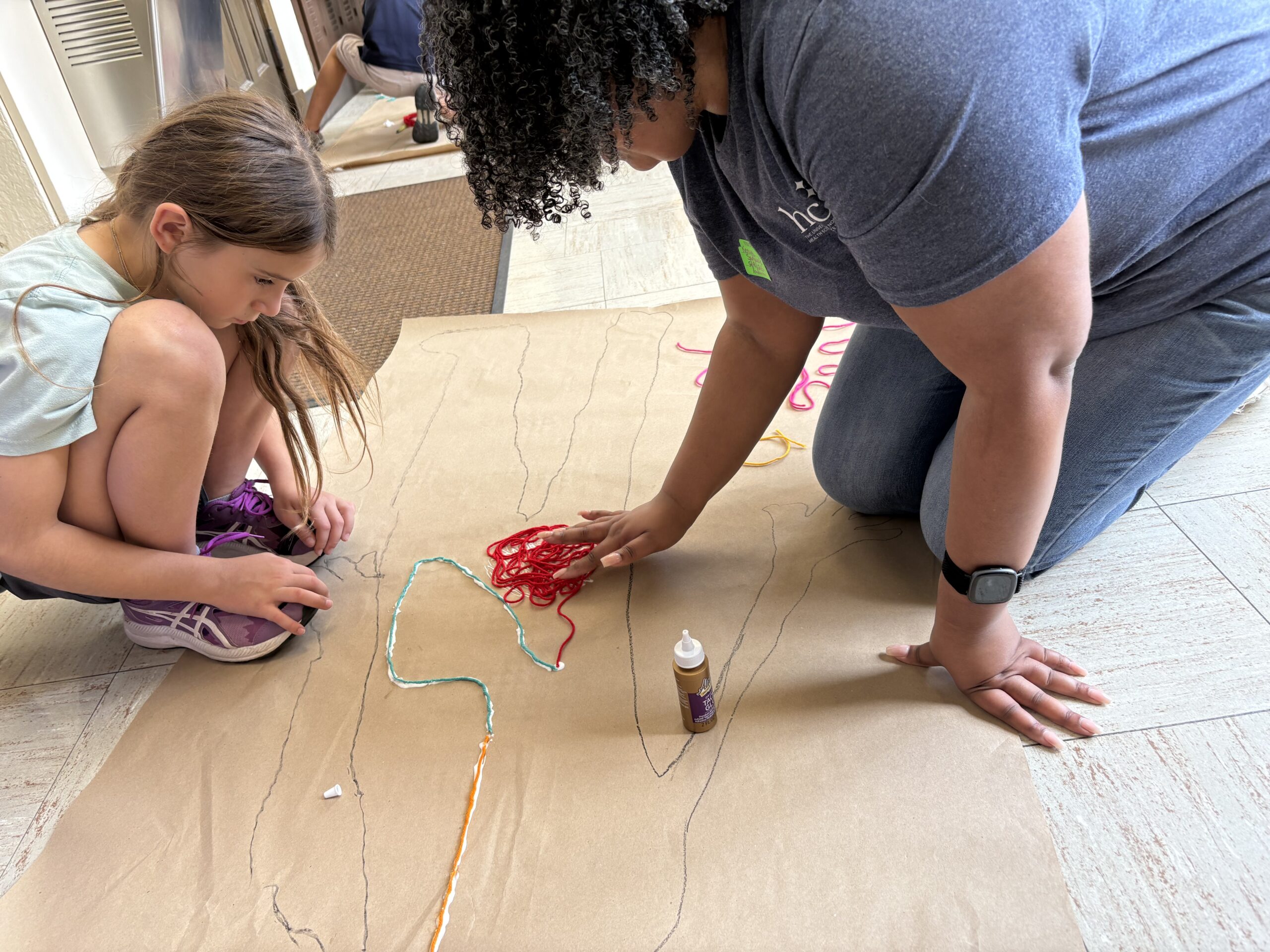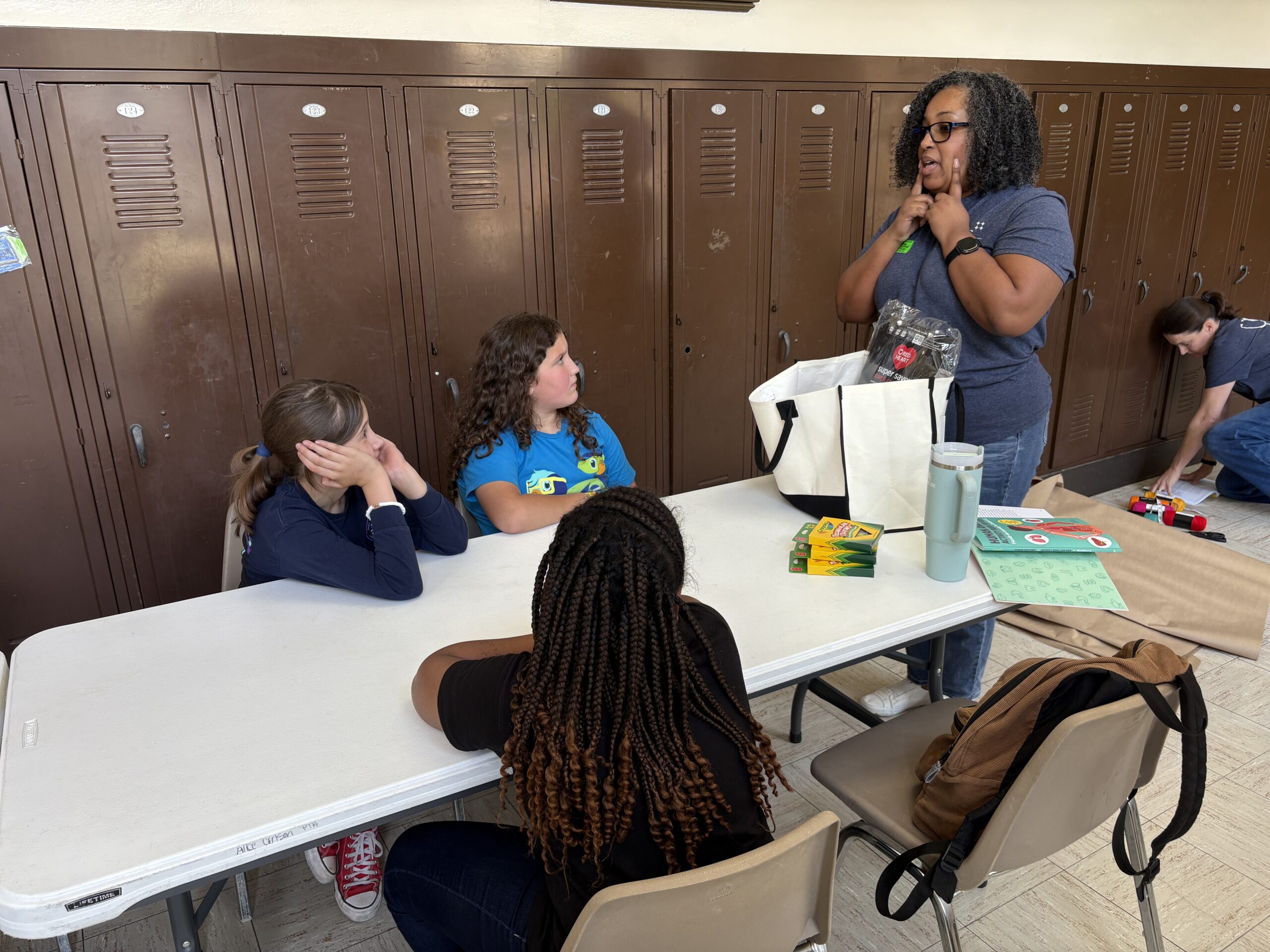Friday, July 18, 2025
With colorful markers, yarn and plenty of glue, students at Alice E. Carlson Elementary School explored the wonders of the human body—one organ system at a time—thanks to a creative collaboration between UNT Health Fort Worth and the school’s enrichment program with the College of Health Professions.
As part of Carlson’s “Interest Clusters” series, physician assistant Kenya Samuels, an associate professor in UNT Health’s physician assistant program, led interactive sessions on May 9 and May 16 that gave third- through fifth-graders hands-on exposure to science and medicine.
“Participating in the STEAM Career Event at Alice Carlson Elementary School was a deeply rewarding experience,” Samuels said. “Engaging young students in science not only enhances their current understanding but also ignites curiosity that can shape their future academic and career interests.”
 The sessions were part of a seven-week enrichment series organized by Brandy Schwarz, DPT, EdD, associate professor of physical therapy at UNT Health. Schwarz, whose
own children have attended Carlson, has been coordinating health-focused clusters
for several years. This spring marked the first time multiple disciplines—physical
therapy, physician assistant studies, pharmacy, and clinical and behavioral health—joined
forces to deliver a fully interprofessional curriculum.
The sessions were part of a seven-week enrichment series organized by Brandy Schwarz, DPT, EdD, associate professor of physical therapy at UNT Health. Schwarz, whose
own children have attended Carlson, has been coordinating health-focused clusters
for several years. This spring marked the first time multiple disciplines—physical
therapy, physician assistant studies, pharmacy, and clinical and behavioral health—joined
forces to deliver a fully interprofessional curriculum.
“This approach exposes the kids to a variety of health professions while keeping them engaged with different activities each week,” Schwarz said.
Interest Clusters are a hallmark of Carlson’s enrichment program, based on Joseph S. Renzulli’s Schoolwide Enrichment Model. Designed to help students develop their individual talents, the model invites community members and organizations to share their skills and passions with students. All children in grades third through fifth grade select clusters aligned with their interests, ranging from woodworking to sports science.
UNT Health faculty participants used fun, science-based activities to explore topics like human anatomy, movement and organ systems. Samuels’ sessions focused on the digestive system and lungs, complete with multi-colored yarn to illustrate how these systems work.
 The collaboration reflects UNT Health’s broader commitment to community engagement
and early exposure to health science careers.
The collaboration reflects UNT Health’s broader commitment to community engagement
and early exposure to health science careers.
“I’m grateful to be part of a university that values and actively supports these efforts,” Samuels said. “It allows me to integrate outreach into my professional journey and continue this important work.”
Schwarz believes the impact reaches beyond science education.
“Even if students don’t go into health care, we want them to walk away with a greater appreciation for their own health and how to take care of themselves,” she said.
The partnership also underscores the power of interdisciplinary collaboration among UNT Health’s programs. Schwarz shared feedback from an employee of Carlson who praised the teaching skills of Joseph D. Malaer, one of the participating faculty.
“It’s not always easy to teach younger students, but he did a phenomenal job,” she said.
As the series wrapped up, faculty expressed hopes to continue and expand their outreach.
“This is just the beginning,” Schwarz said. “We want to keep bringing science to life for students—and maybe inspire the next generation of health professionals along the way.”
From HSC Newsroom - Community by Eric Griffe